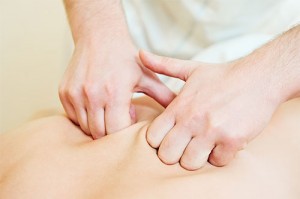A full body massage is a form of massage therapy that involves massaging (almost!) the entire body, using professional techniques that can help to relieve muscle soreness, promote relaxation, and reduce stress.
A full body massage will typically include the back, legs, arms, head, shoulders, and feet. Some providers may also offer a glute massage as part of your full-body treatment, but you’ll be able to discuss this with your therapist beforehand if you’d rather opt out.
The benefits of a full body massage
- Reduce stress
- Relieve muscle injury
- Improve sleep
- Better blood circulation


Swedish massage is one of the most popular forms of massage therapy. It's usually used to:
- help people to relax
- release tension from your muscles
- improve your joint range of motion
The techniques used in Swedish massage are usually designed to help blood return to your heart. This helps to improve your circulation (blood flow).
What are the health benefits of Swedish massage?
Many people use Swedish massage just to relax. It can also be used to help with physical conditions and has been shown to help relieve:
- pain
- stress
- muscle tension
Deep tissue massage offers both physical and psychological benefits. It can relieve muscle pain and stiffness and provide stress-relieving relaxation for the body and mind.
Deep tissue massage is a massage technique that’s mainly used to treat musculoskeletal issues, such as strains and sports injuries. It involves applying sustained pressure using slow, deep strokes to target the inner layers of your muscles and connective tissues. This helps to break up scar tissue that forms following an injury and reduce tension in muscle and tissue.
It may also promote faster healing by increasing blood flow and reducing inflammation.
The benefits of deep tissue massage:
Deep tissue massage offers both physical and psychological benefits. Unlike other massage techniques that focus on relaxation, deep tissue massage helps to treat muscle pain and improve stiffness. But it can still help to you unwind mentally, too.
People have also reported that deep tissue massage helps with:
- sports injuries
- fibromyalgia
- plantar fasciitis
- high blood pressure
- sciatica
- tennis elbow


Prenatal massages are adapted for the anatomical changes you go through during pregnancy. In a traditional massage, you might spend half the time lying face-down on your stomach (which is not possible with a baby belly) and half the time facing up (a position that puts pressure on a major blood vessel that can disrupt blood flow to your baby and leave you feeling nauseous).
But as your shape and posture changes, a trained massage therapist will make accommodations with special cushioning systems or holes that allow you to lie face down safely, while providing room for your growing belly and breasts. Or you might lie on your side with the support of pillows and cushions.
Deep Connective Tissue Massage borrows many of its techniques from traditional Swedish massage. However the pressure that a massage therapist applies during a deep connective tissue massage is more intense, and massage oil or lotion is not typically used. The strokes of this type of massage are slower and more pressure is applied in order to warm the muscle tissue and reach the deeper layers of muscle. Although having a deep connective tissue massage should not cause you any pain, its often less relaxing and less comfortable then a traditional Swedish massage. Most practitioners ask that their clients tell them immediately if the stroke pressure is too intense.
During a Deep Connective Tissue Massage session, the massage therapist will focus on releasing tension from the deeper tissue structures of the muscle and fascia (or connective tissues) with deep, intense strokes. When a therapist locates a chronic knot (also referred to as an adhesion), they will often recommend that a client adapt a total lifestyle change – which may include exercises to help improve posture, balance, movement, and relaxation. These steps are complementary to your weekly deep connective tissue massage sessions.


Sports massage is focused and systematic, targeting muscles that are used in a specific sport. It uses various techniques to decrease muscle pain and improve recovery, as well as improve overall range of motion and flexibility to support safe and effective movement.
A sports massage therapist can assist with training, rehabilitation, and pre- or post-performance goals. While often sought by elite and amateur athletes, sports massage can also be beneficial for anyone who regularly exercises.
Sports massage is highly valued by many athletes, even though some of its purported benefits are not supported by research. If your goal is relief from sore and tense muscles after a workout, as well as general relaxation, it may be valuable for you.
Massage is a tool to help heal. Whether it's stress, illness or simply to pamper yourself, the benefits of massage can be life changing.
Book Online